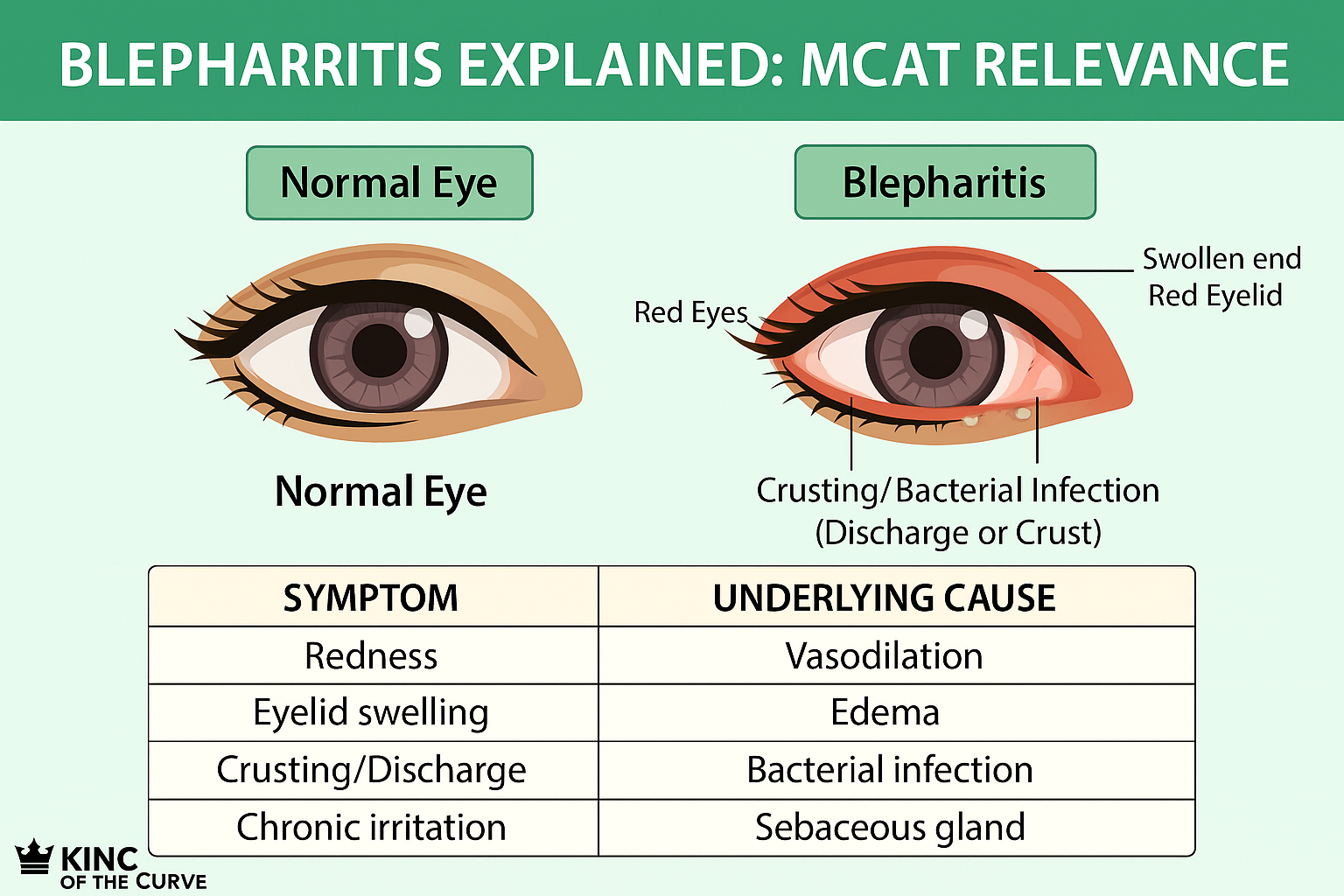👁 Blepharitis Explained: What Every MCAT Student Should Know
Blepharitis is the inflammation of the eyelid margins, often leading to redness, irritation, and crusting near the eyelashes. While this might sound like a minor annoyance, understanding the pathophysiology behind blepharitis is key for future physicians — and a high-yield topic for the MCAT and clinical practice alike.
Let’s break it down using a custom King of the Curve visual, comparing a normal eye to one affected by blepharitis.
🧪 Clinical Features of Blepharitis
Our visual highlights several hallmark symptoms:
Red Eyes: A key inflammatory sign, driven by vasodilation of conjunctival vessels.
Swollen Eyelid: Indicates local immune response and soft tissue involvement.
Bacterial Discharge or Crusting: Often linked to Staphylococcus aureus colonization.
🩺 MCAT Relevance: Inflammation, Immunity & Microbiology
Blepharitis connects to multiple MCAT topics:
Innate immune response: The eye’s barrier function is disrupted, triggering cytokine release.
Microbiology: Gram-positive cocci like Staphylococcus aureus may be implicated.
Histology: Eyelid tissues contain Meibomian glands, often blocked in chronic blepharitis.
Behavioral science: Eye discomfort can reduce patient quality of life — good material for psych/soc passages.
💡 KOTC Study Tip
Remember this visual cue:
Crust = Colonization. Redness = Response. Swelling = Stage 2 inflammation.
This is a great chance to connect real-world symptoms to underlying mechanisms, a core MCAT skill.
📚 Quick Review Table
| Symptom | Underlying Cause |
|---|---|
| Redness | Vasodilation |
| Eyelid Swelling | Edema |
| Crusting/Discharge | Bacterial infection |
| Chronic Irritation | Sebaceous gland |
🔬 High-Yield Takeaways
Blepharitis is more than just an "eye infection" — it's a case study in inflammation.
Expect to see this in passages covering immune defense, barrier breakdown, or clinical diagnostics.
Visual learning like this builds memory and improves retention.
💥 Ready to Master Medical Science?
King of the Curve makes learning science effortless and rewarding with tools like:
📸 1000+ custom visuals
🧠 Adaptive Q-Bank + gamified MCQs
📈 MCAT-timed practice modes
🎮 Multiplayer features & Curve Coins
📲 Get started FREE today:
kingofthecurve.org/free-lifetime
Frequently Asked Questions (FAQs)
-
Aim for 4-6 focused hours, ensuring you incorporate breaks to avoid burnout.
-
Practice mindfulness techniques, take practice exams under realistic conditions, and maintain a balanced lifestyle.
-
Set short-term goals, seek support from mentors, and reward yourself for small achievements.
-
Regular exercise improves focus, reduces stress, and enhances overall mental clarity.
-
KOTC offers personalized learning tools, gamification features, and adaptive question banks to help students stay on track without burnout.


